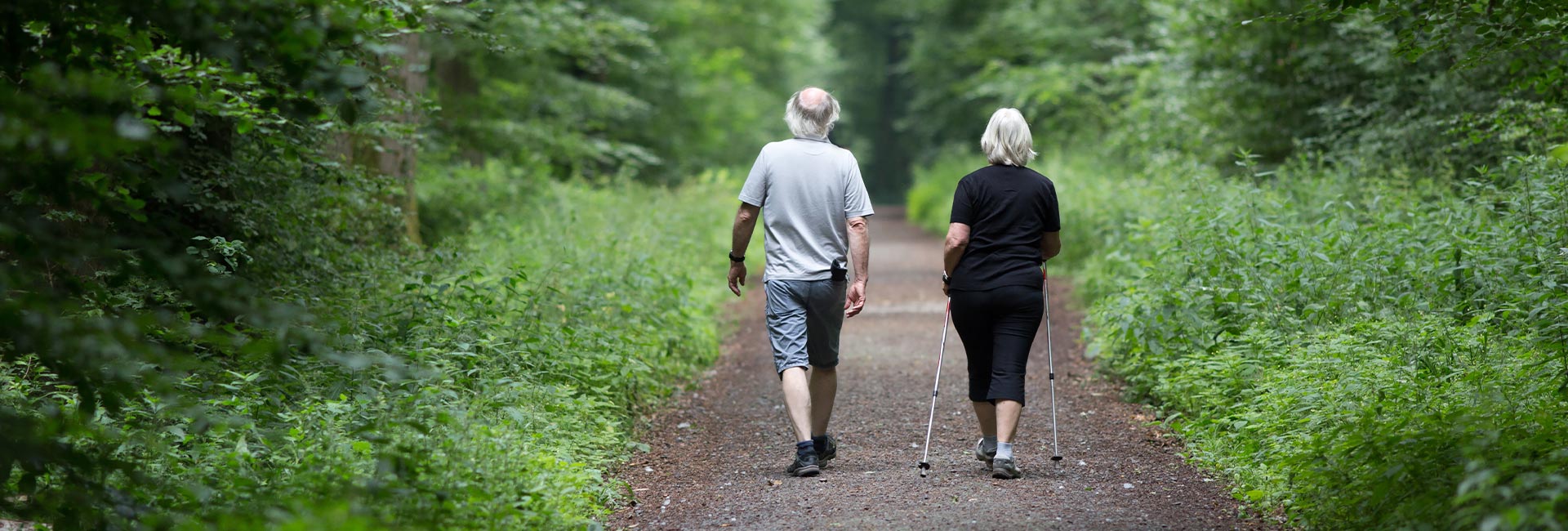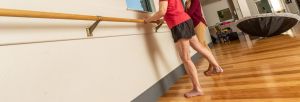by Sally Van Raemdonck – Therapeutic Associates intern and student of the Northern Arizona University Doctor of Physical Therapy program
What is single-leg balance, and when is it used?
Single-leg balance is a skill that many people possess without effort when they’re younger, then utilize day-to-day less and less with age – or so they think! It is not just used when hopping on one foot – in actuality, it is used by everyone, every day!
It is used any time you are relying on one limb to support your body with no other assistance. You can find yourself relying on this balance during various activities, including with each step you take! When taking a step while walking, about 40 percent of your time is spent with one foot in the air, while the other 60 percent is spent with both feet on the ground. The 40 percent of airtime during gait is when you are the most vulnerable to losing your balance, and potentially injuring yourself.
Here are some examples of activities that utilize single-leg balance:
- Walking, jogging, and running
- Going up or down stairs
- Getting dressed (especially putting on pants or shoes!)
- Playing sports
- Getting into and out of cars
- Stepping over objects
- Going up and down curbs
- Reaching for a far-away item
- Catching yourself to avoid a fall
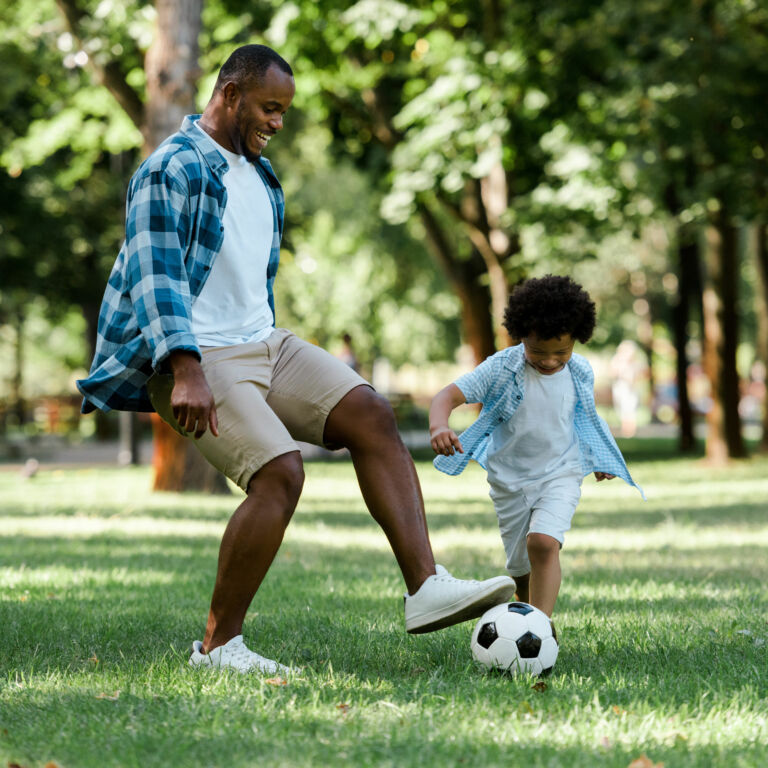
Finding your single-leg balance.
A simple way to check your own single-leg balance at home is to perform the Single Leg Stance Test. If you’re concerned about falling while testing your own single-leg balance at home, try recruiting an able-bodied family member or friend. If there is no one who can help, do not attempt to test this skill at home alone. Instead, seek out a physical therapist or physician who can keep you safe while testing single-leg balance.
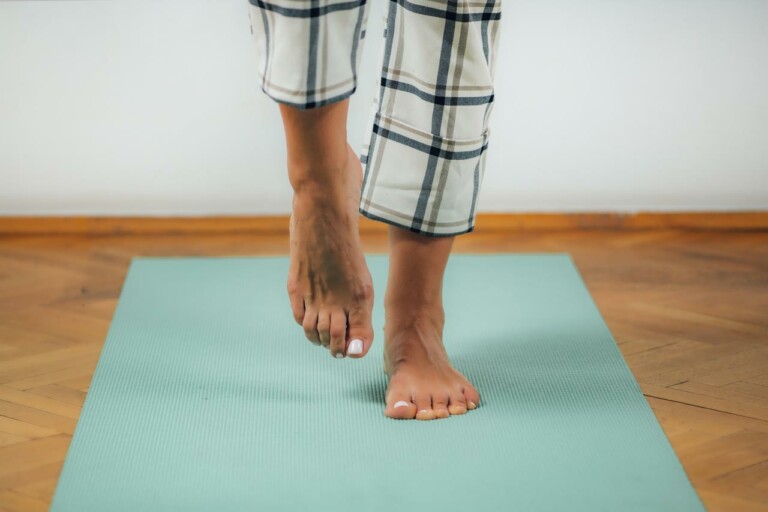
To begin, stand next to a sturdy surface, such as a kitchen counter or a dining room table. You’ll need a clock or a stopwatch to track the time that you can stand on one leg without a loss of balance. With your hands on your hips, try standing on one leg with the other foot hovering just a few inches above the ground. Using your clock, track the amount of time you can successfully keep upright. Then, try to balance on your other leg, too.
You can compare your values to the following generally accepted normal values for various ages listed below.1
- 8-39 years old (eyes open): 43 seconds
- 40-49 years old (eyes open): 40 seconds
- 50-59 years old (eyes open): 37 seconds
- 60-69 years old (eyes open): 26.9 seconds
- 70-79 years old (eyes open): 18.3 seconds
- 80-99 years old (eyes open): 5.6 seconds
Who should practice single-leg balance?
Single-leg balance is essential to everyday activities, more than we realize. No matter your age or activity level, it is important to work to improve your single-leg balance. The following populations commonly have deficits in balance:
- Post-surgical populations following lower extremity surgical procedures
- People with vestibular disorders
- Aging populations
- Overweight and obese populations
- Sedentary populations
- Post-stroke populations
- Post-TBI populations
- Other neurologically involved populations
This is not an exclusive list, however, and everyone should work on improving their single-leg balance. It is recommended to seek consultation with a physical therapist or other provider before attempting these exercises at home.
Beginner exercises to improve single-leg balance.
The following exercises are typically considered safe to execute at home, however, it is important to remember that it is recommended to see a movement specialist, like a physical therapist or other provider, before beginning.
When you are first starting out, try holding the stances as long as you feel safely able, then aim to increase the time you spend with each exercise by a couple of seconds every day or two. Anytime you feel yourself struggling to comfortably maintain your balance while in these stances, listen to your body and take a rest. It is important to be aware of your limits and to remain safe. The following is a list of exercise progressions. For the most optimal results, follow them in order.
Pro tip: When practicing single-leg balance exercises, have your hands already positioned over a sturdy surface to catch your balance by lightly tapping your fingers to the surface to readjust your balance. If you continue to feel at risk of falling, lean into your hands on your sturdy surface and return your opposite foot to the ground. It is important not to continue the exercise if you feel you are utilizing a “death grip” on the surface in front of you to maintain balance!
Tandem Stance
To practice this position, stand near a sturdy surface, like a counter or tabletop. Place one foot directly in front of the other in a straight line while hovering your hands over your sturdy surface to offer balance support.
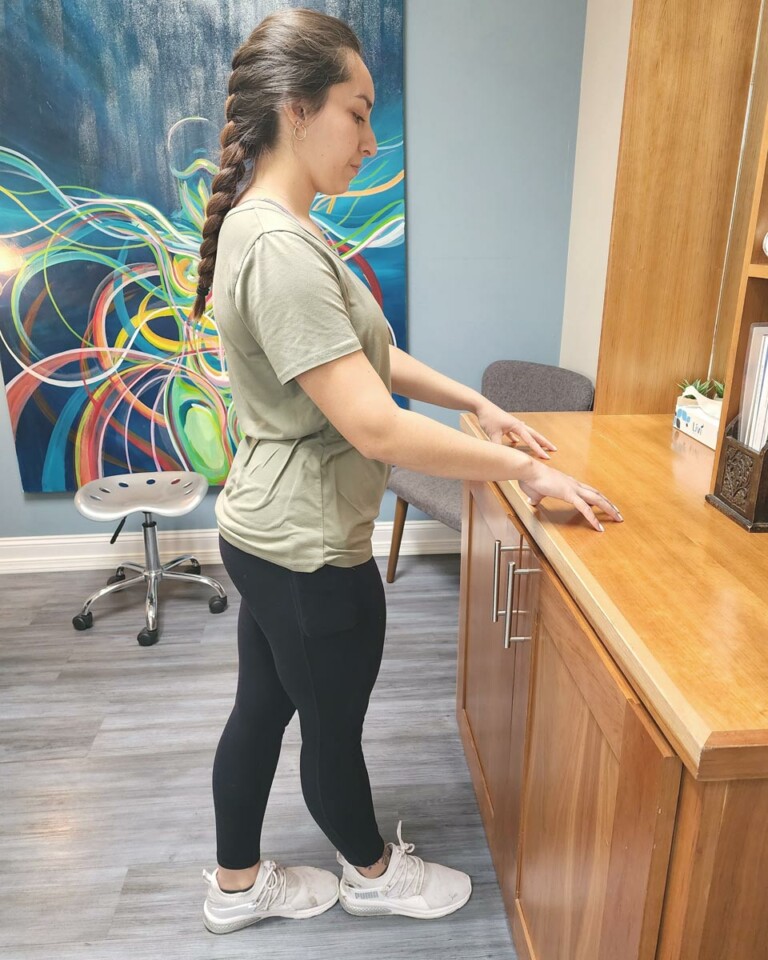
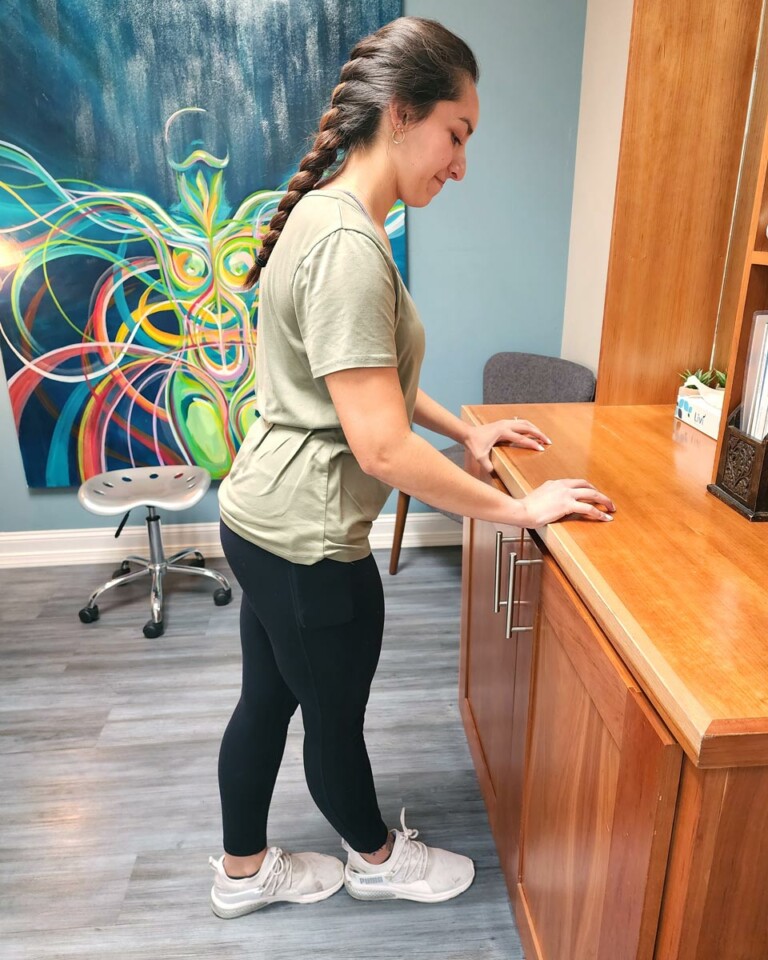
Tandem Stance with Head Movements
To practice this exercise with head movements, repeat the above position. Slowly begin to turn your head left to right. Once you can comfortably do this motion continuously, try moving your head up and down in a nodding motion.
Note that true tandem stance has feet just touching heel-to-toe, but if you cannot get your feet directly in a line, place your feet wider apart and work to be able to move your feet closer together as you practice over time.
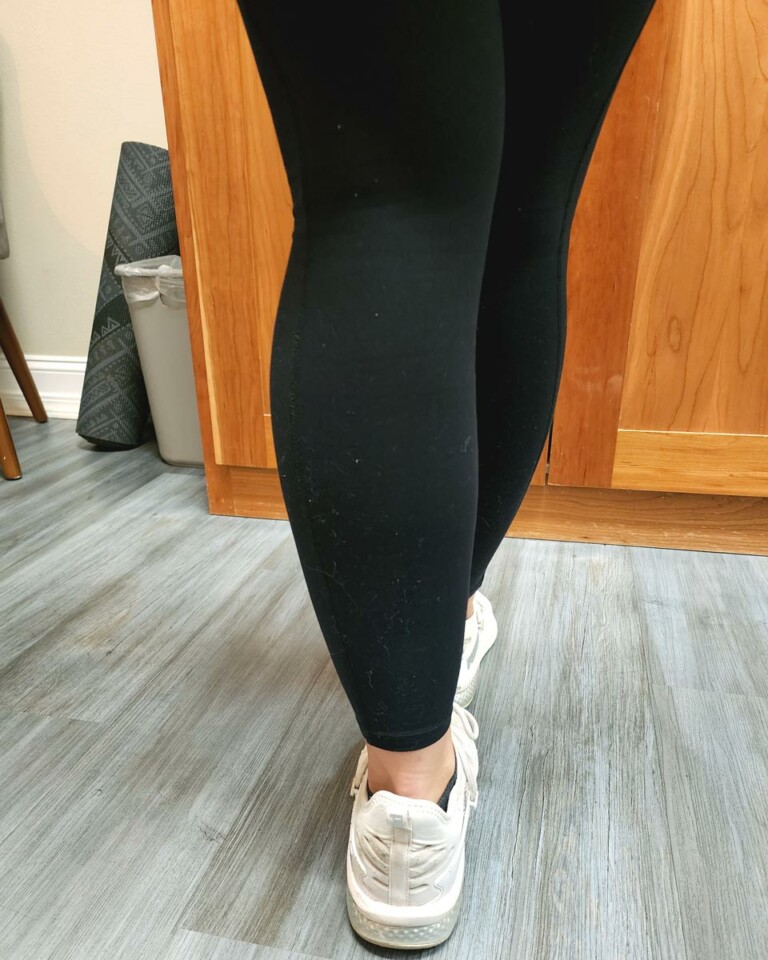
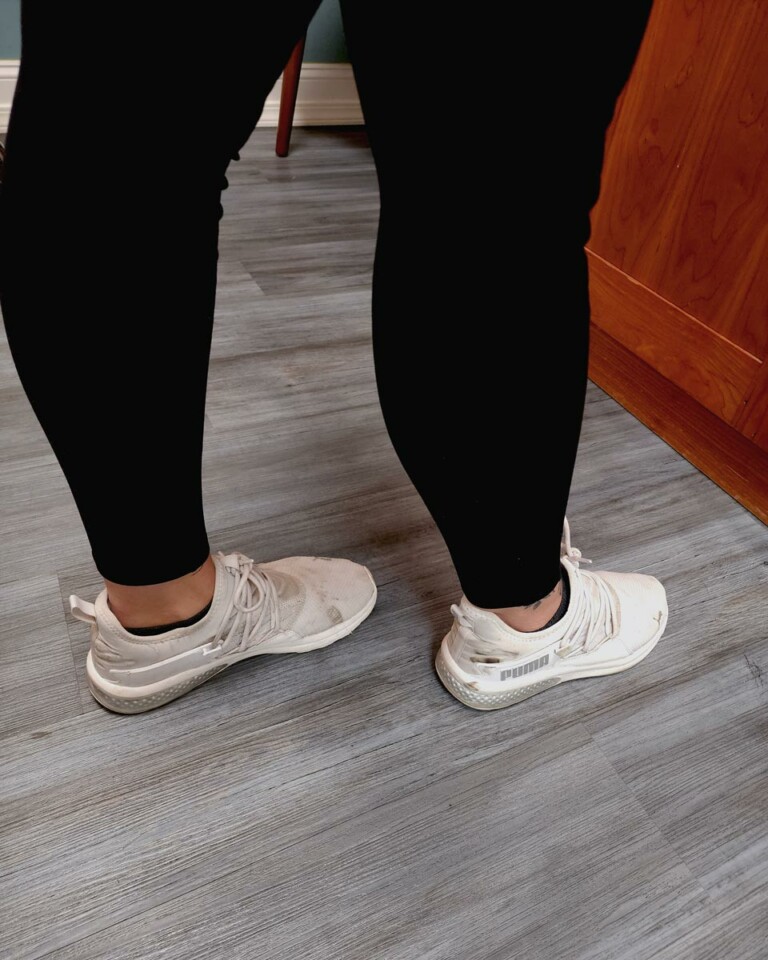
Single-Leg Balance
To practice this position, you will stand within comfortable arm’s reach of a sturdy surface, like a counter or tabletop. First, shift your weight to one side. Once comfortable in your footing, lift your opposite foot a couple of inches off the ground. For more advanced challenge, lift the foot toward the buttocks and hold.
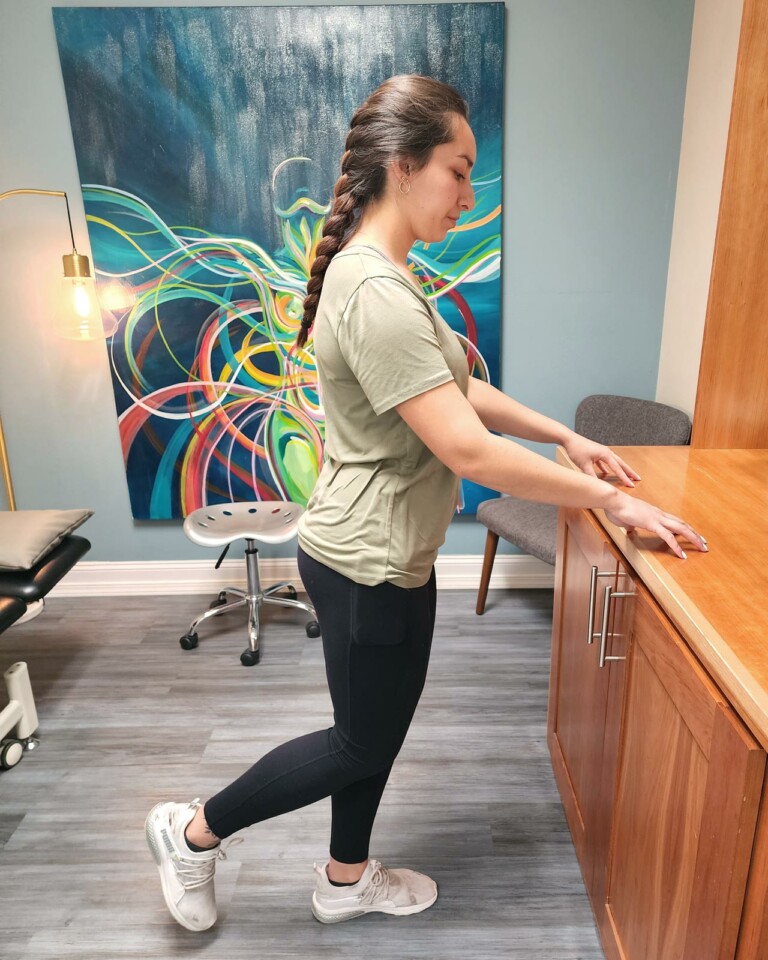
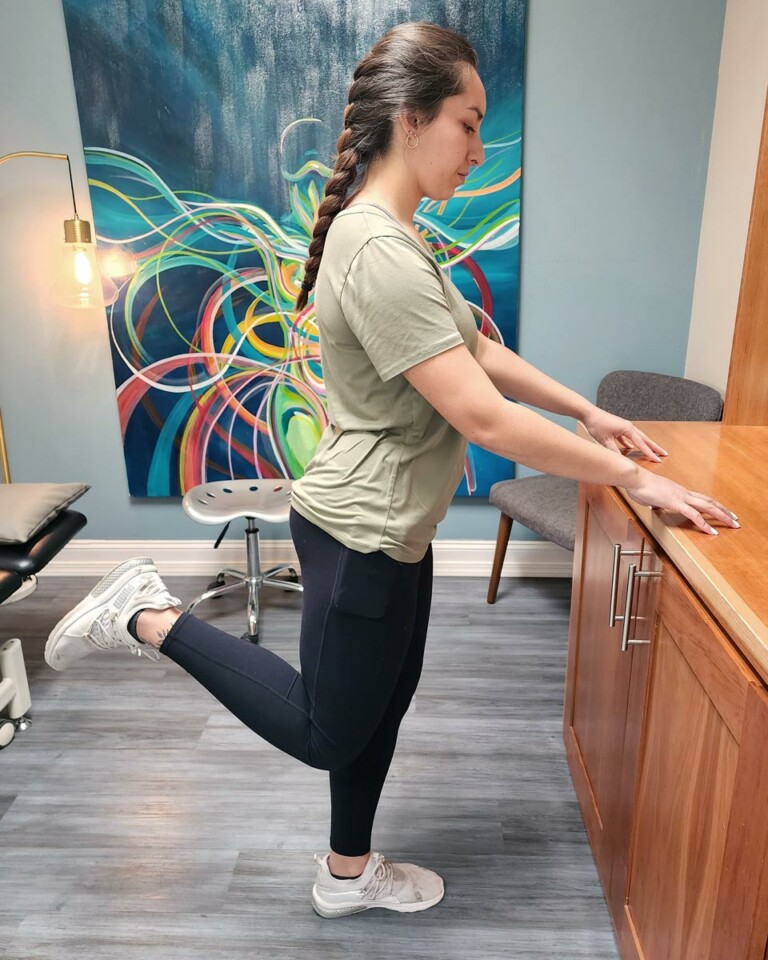
Once you feel an improvement in your single-leg balance, consider changing the surface you are practicing on! The simplest way is to layer two small towels folded in half on top of each other. Standing within close reach of your sturdy surface, begin standing in the tandem stance on your soft surface and try to maintain your balance. Once you feel confident in your stability in tandem try adding in the previously practiced head movements, and then you can attempt to do the single leg balance exercises, too, on your soft surface to further challenge yourself.
Need to start with overall balance first?
Check out these blogs for more ideas to improve your balance!
Physical therapy for balance training.
Physical therapists are adept at screening for balance deficits and developing a personalized plan to address the various components involved in training balance optimally and efficiently. To continue to progress with single-leg balance exercises and meet your goals, reach out to a physical therapist to get customized care!
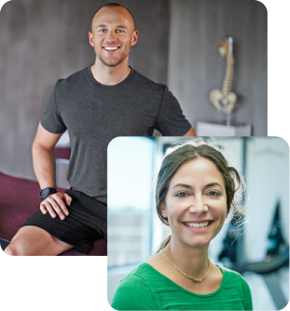
Start your physical therapy journey today.
As physical therapists, we know the importance of movement for overall health and well-being. From injury recovery to achieving optimal performance, our passion is to help every patient reach their goals and live an active, pain-free life. Get started with PT today!
References:
- Springer BA, Marin R, Cyhan T, Roberts H, Gill NW. Normative values for the unipedal stance test with eyes open and closed. J Geriatr Phys Ther. 2007;30(1):8-15. doi: 10.1519/00139143-200704000-00003. PMID: 19839175.
